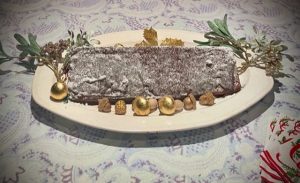I made this lentil and roasted cumin cauliflower before although as a combine dish – you’ll find it in my recipe list under July 2017. So for anyone who would like to have a delicious vegetarian meal just add some mixed greens to the final dish – bok choy and spring greens were my choice today.
And for those eating meat, this lamb loin was tender and delicious, the marinade a real winner. I based it on a very old recipe from the Bathers Pavillion in Sydney decades ago but changed the ingredients as I didn’t want palm sugar, peanut oil or green peppers.
I had fun in the kitchen making it ‘mine’. See what you think!
Ingredients for two servings:
Spice paste:
3 small red onions, roughly chopped
4 cm piece of fresh ginger, roughly sliced
4 cloves of garlic, pressed
1-2 red chilli, chopped. The amount is up to you!
1 1/2 tbs fish sauce
70 ml olive and sesame oils
handful of chopped coriander
2 lamb loins, approx 150 g pp
Method:
To make the spice marinade, peel, chop and press all the solid ingredients into a bowl with the oils and fish sauce. Blend to a find paste and rub generously over the lamb loins. Set aside for at least 4 hours – best to marinate overnight.
Heat some oil or ghee in a pan and sear the lamb loins for about 5 minutes on each side. Place into an oven-safe dish in the rest of the marinade – I added some broth to this as I was concerned it would dry out and wanted to avoid it ‘catching’, plus I wanted some more sauce to pour over the lentils.
You can roast the cumin cauliflower at the same time, 20-25 minutes. Both the veg and the lamb came out perfect.
Cut the loins into slices and plate up – and pour what’s left of the marinade on top, voila!












